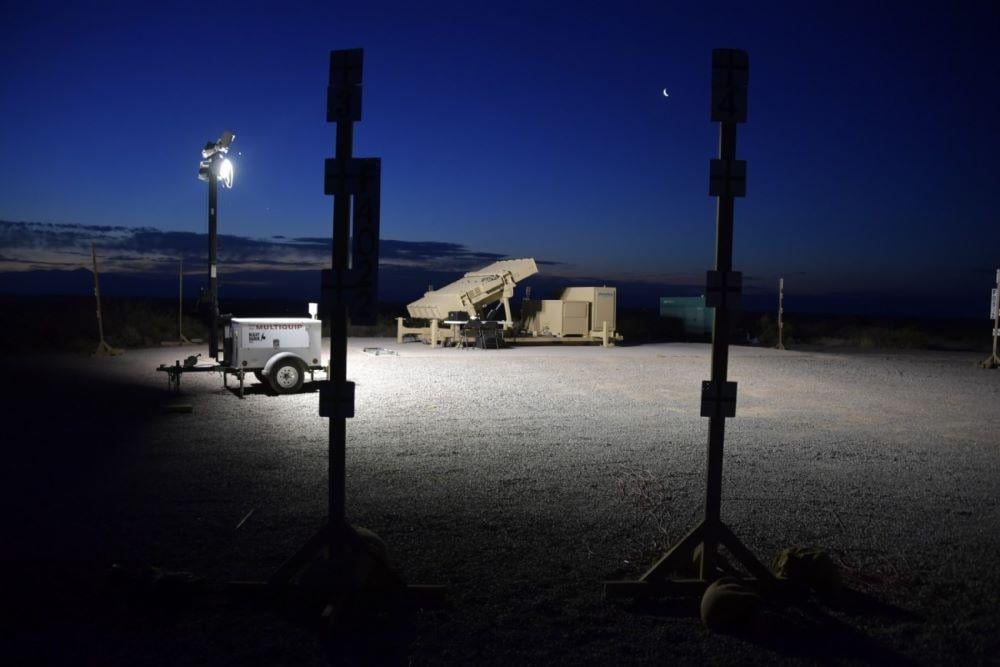
A Dynetics IFPC Inc. 2 prototype.
HUNTSVILLE, Alabama—The U.S. Army will launch a competition for a second interceptor for its Indirect Fire Protection Capability (IFPC) Increment 2, targeting a larger bang from a smaller missile at a level that will require new development.
IFPC currently fires the AIM-9X Sidewinder missile for ground-launched air defense, and Brig. Gen. Frank Lozano, the program executive officer for Missiles and Space, says he wants to see an AIM-120-like capability from a smaller form factor.
During an Aug. 6 briefing, Lozano said the second interceptor is intended to protect against supersonic cruise missiles. The Army wants to move quickly, with the competition expected next year and with development funded over the next five years.
Companies including Boeing, Lockheed Martin and Rafael have said they intend to compete. Jim Bryan, director of Boeing’s Integrated Air & Missile Defense, tells Aerospace DAILY that since IFPC Inc. 2 will be complementary to the Patriot air defense system, it is right in Boeing’s wheelhouse.
Boeing intends to compete as an all-up-round provider for the interceptor program, and not just as a seeker supplier like it is for Patriot. Boeing’s history of building all-up-rounds—such as the large-scale Ground Based Midcourse Defense system and smaller Harpoon and the Standoff Land Attack Missile-Expanded Range—are relevant.
“Those are offensive weapons, but they’re still the same form factor, the same propulsion system, same navigation system, same radar systems, differences in algorithm in a defensive weapon to say hit to kill,” Bryan said at the Space and Missile Defense Symposium here.
Lozano says broadly that he wants industry to focus on developing new propellants to improve a missile’s range and speed without increasing size. This is acutely needly as the military needs to focus on moving weapons around the broad Indo-Pacific region.
“So, making sure that you can provide advanced propellant recipes, rockets and missiles that go farther and fly faster at greater velocity with certain time of flights in our current form factors is paramount for what we’re trying to achieve,” Lozano says.
